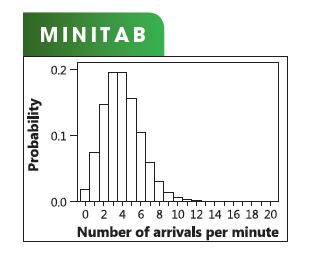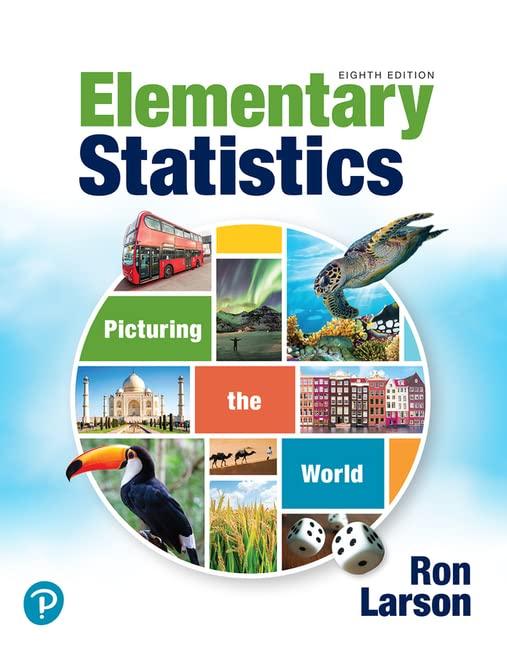The mean number of arrivals per minute is four. Find the probability that (a) no customers are
Question:
The mean number of arrivals per minute is four. Find the probability that
(a) no customers are waiting in line after one minute.
(b) one customer is waiting in line after one minute.
(c) one customer is waiting in line after one minute and no customers are waiting in line after the second minute.
(d) no customers are waiting in line after two minutes.
In Exercises 1–7, consider a grocery store that can process a total of four customers at its checkout counters each minute.
Queuing means waiting in line to be served. There are many examples of queuing in everyday life: waiting at a traffic light, waiting in line at a grocery checkout counter, waiting for an elevator, holding for a telephone call, and so on.
Poisson distributions are used to model and predict the number of people (calls, computer programs, vehicles) arriving at the line. In the exercises below, you are asked to use Poisson distributions to analyze the queues at a grocery store checkout counter.
Step by Step Answer:






